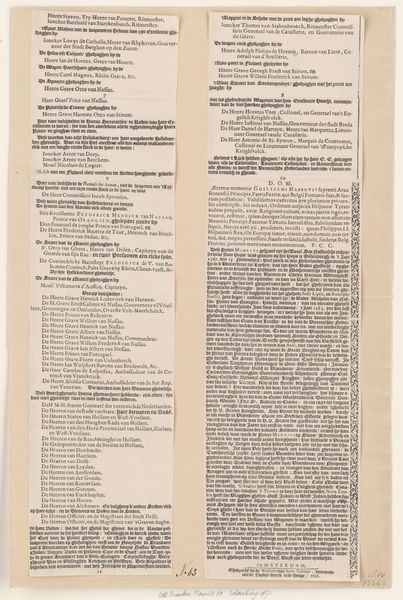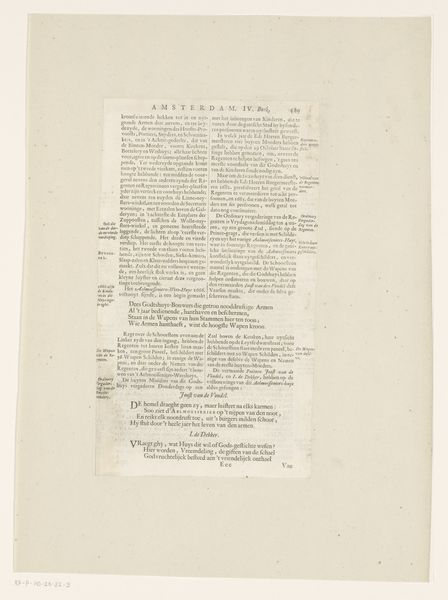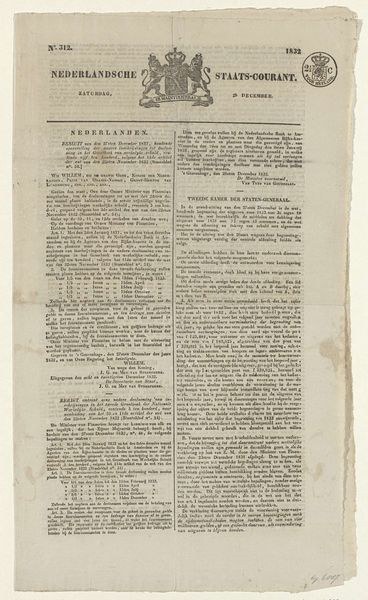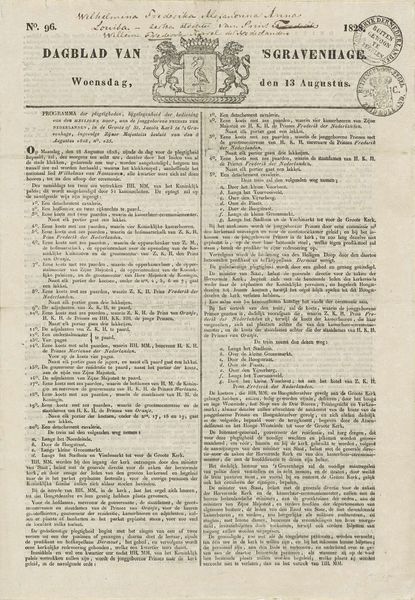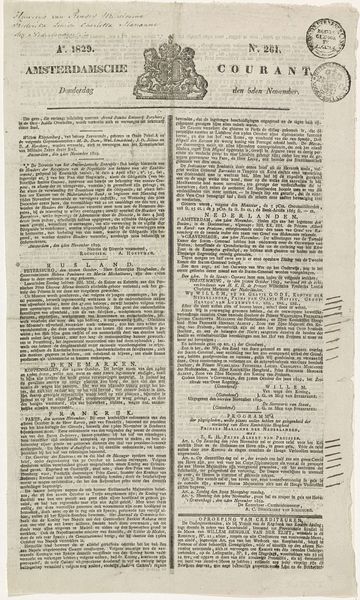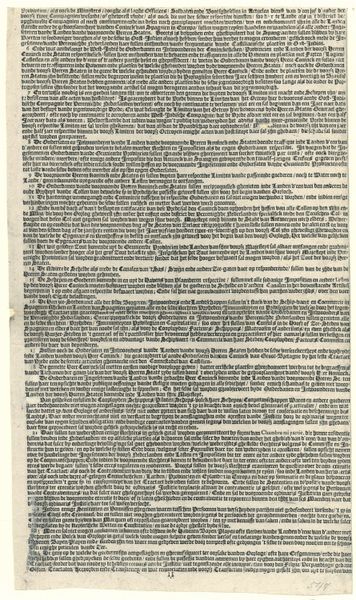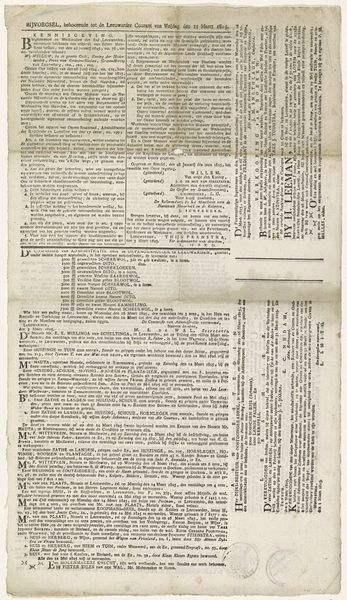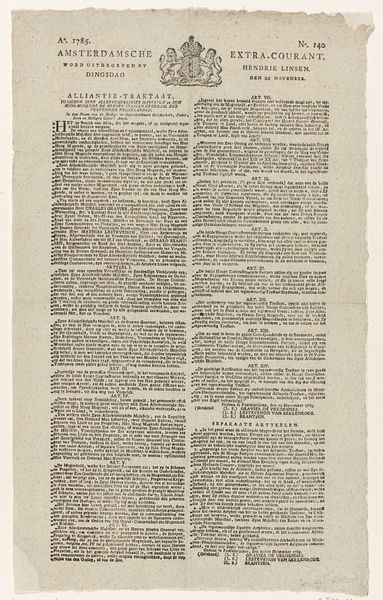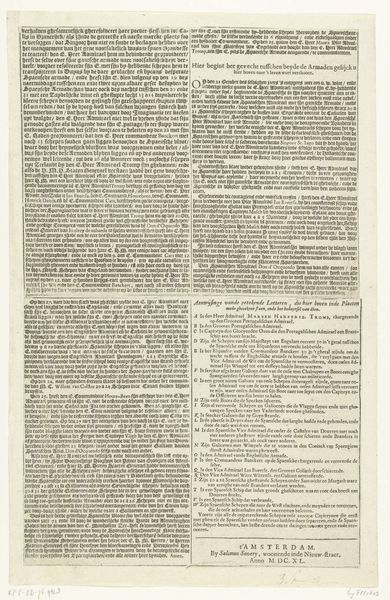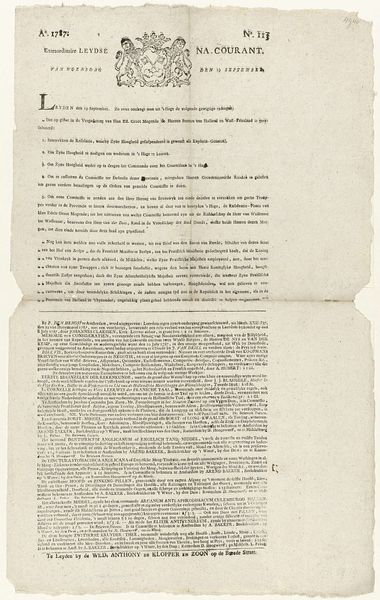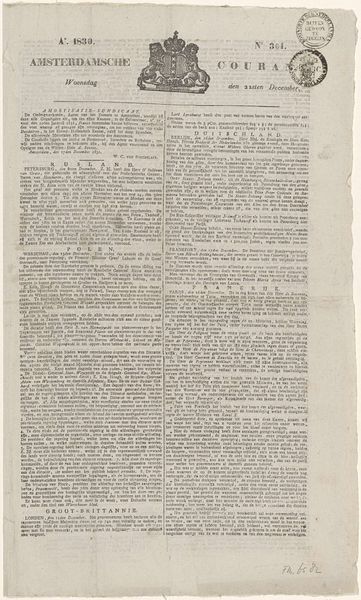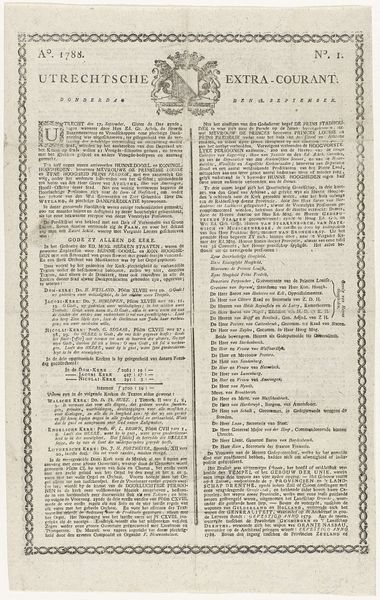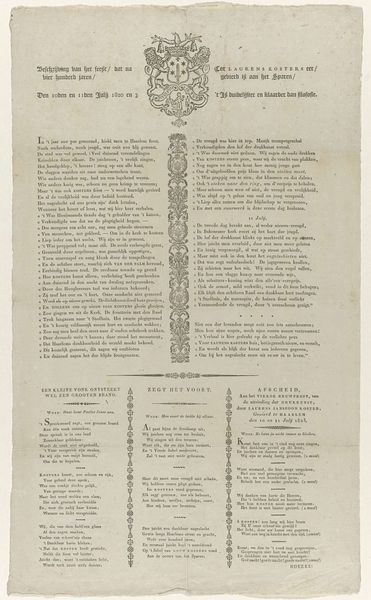
print, paper, engraving
#
portrait
#
dutch-golden-age
# print
#
old engraving style
#
paper
#
history-painting
#
engraving
#
calligraphy
Dimensions: height 475 mm, width 130 mm
Copyright: Rijks Museum: Open Domain
Curator: Today, we're examining a series of prints from 1626 by Claes Jansz. Visscher entitled "Lijkstatie van prins Maurits in 1625, tekstblaadjes 1-6", which translates to "Funeral procession of Prince Maurice in 1625, text sheets 1-6." Editor: My first thought is how detailed it is! You can see so many tiny names and carefully etched lettering. I almost get the impression that I’m peering through a magnifying glass, reading historical proclamations on aging paper. Curator: Indeed, the meticulous detail is characteristic of engraving, a printmaking technique using a metal plate. The script demonstrates a blend of formality and calligraphic flair, aligning with Dutch Golden Age aesthetics, primarily serving a documentary purpose by meticulously listing the procession attendees. Editor: A literal who’s-who of the era! It's like an Instagram tag list of 17th-century Dutch aristocracy but somber. Does this kind of elaborate record-keeping tell us anything about their social hierarchy? Curator: Absolutely. This detailed listing and preservation point toward the cultural values of remembrance and the importance of status, where recording attendees affirmed the political power and social importance attached to honoring Prince Maurice. The overall organization on the page, neatly arranged and justified, shows a concern for order and structure, reflecting the period's administrative and organizational preferences. Editor: Right. There’s something almost beautiful about seeing such old forms of data, of information design. But seeing all those names makes me think about their lives and the fleeting nature of their influence. Even princes and dukes, diminished into names on paper. Kind of humbling. Curator: A fitting observation, capturing the dual aspect of the work: preserving legacy while subtly reminding us of mortality. The engraving exemplifies how formal structures communicate not just information, but the very ethos of an age. Editor: Yes, the formality of the presentation belies the more profound human questions beneath. I guess this isn’t just about historical accuracy but our connection with history. It prompts us to wonder about people like Maurice and the unnamed individuals present that day in 1625.
Comments
No comments
Be the first to comment and join the conversation on the ultimate creative platform.
